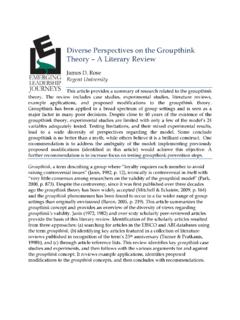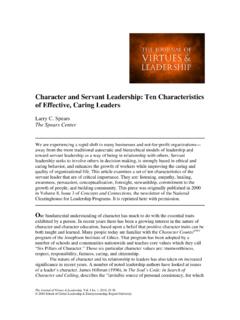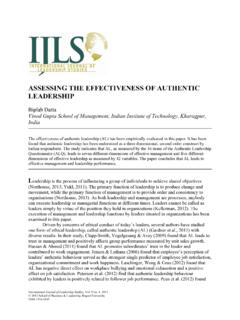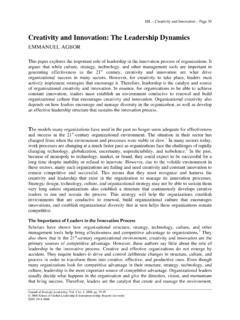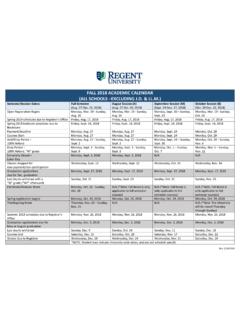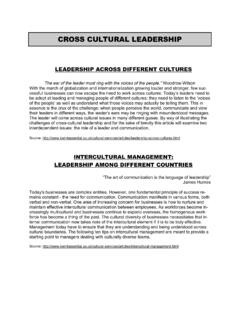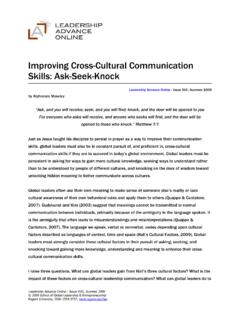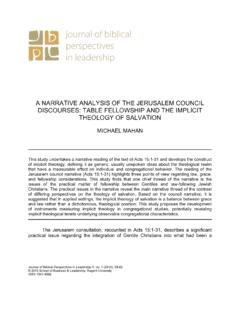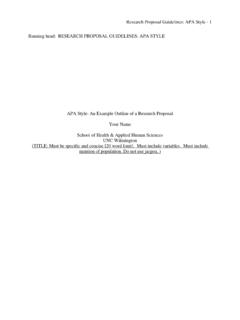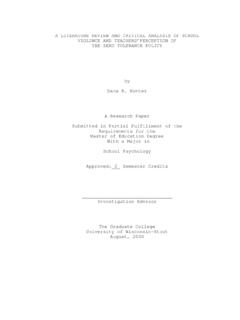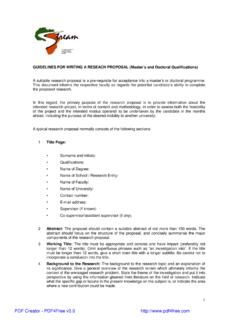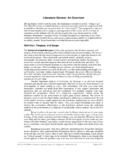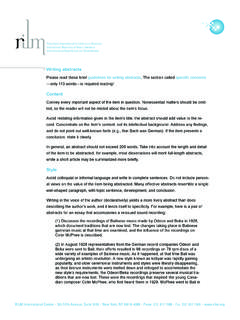Transcription of Guidelines for Writing Research Proposals and …
1 Guidelines for Writing Research Proposals and Dissertations Dr. Mark A. Baron Division of Educational Administration University of South Dakota iiGuidelines for Writing Research Proposals and Dissertations The following information presents Guidelines for preparing and Writing Research papers and reports, including theses and dissertations. While these Guidelines are generally applicable, specific format and style will be dictated by the nature of the Research involved and the requirements of the department and institution for which the Research proposal or dissertation is written. The Publication Manual of the American Psychological Association, 5th edition (2001) or Concise Rules for APA Style (2005) should be consulted for all questions pertaining to form and style that are not addressed in this guide. A typical dissertation/ Research proposal consists of three chapters or parts: the Introduction (Chapter 1), the Review of Related Literature and/or Research (Chapter 2), and the Methodology (Chapter 3).
2 The completed dissertation begins with the same three chapters and concludes with two additional chapters that report Research findings (Chapter 4) and conclusions, discussion, and recommendations (Chapter 5). While the majority of the Research proposal is written in the present and future tenses, the methodology and findings in the final report or dissertation are written mostly in the past tense. Preceding the main body of the report are several pages containing the preliminary material. The following lists the elements (in order) that comprise the preliminary material. While both Proposals and final dissertations contain a Title Page, the remainder of the preliminary pages are reserved for the final dissertation (although the Table of Contents is optional in the proposal). iiiTitle Page Copyright Page Abstract Committee Signature Page Acknowledgments Table of Contents List of Tables List of Figures Please note that page numbers for preliminary material are written in small Roman numerals ( , iii, iv, v, etc.)
3 That are centered at the bottom margin of the page. The Title Page counts as page i, but the number is not printed on the page. The Copyright Page (if included) counts as page ii, but is also not numbered. The Abstract begins on page iii (if there is a Copyright Page, or page ii if there is no Copyright Page) and the remaining preliminary pages are numbered consecutively. For the main body of the paper, all pages are numbered with Arabic numerals in the upper right corner (on the right margin, from one-half to one inch from the top, with the first line of text beginning approximately one double space below the page number, at approximately one inch from the top). Note that the Word default setting places the page number one-half inch from the top and the first line of text one-half inch below the page number ( , one inch from the top). The default setting may be used without further adjustment.
4 Check to assure that the page number font matches that of the narrative. Pages in the main body of the paper (including the Appendixes) run consecutively from page 1 (the first page of Chapter 1). Use a 1-1/2 inch left margin (to allow sufficient space for binding the final copies) and one inch top ( , about one inch to the first line of ivtext), bottom, and right margins throughout the paper, including any preliminary pages and appendixes. Please note that your text (and tables or figures) should not extend beyond any of the margins on any page (including appendixes that may be reduced copied if necessary). Since the first three chapters (Introduction, Review of Related Literature and/or Research , and Methodology) are almost identical for both the proposal and final dissertation (except for verb tense in all three chapters), the following discussion of these chapters pertains to both. Chapter titles and suggested section headings appear as they would in an actual proposal/dissertation.
5 1 CHAPTER 1 Introduction Chapter 1, which introduces the study and states the focus of the study, begins with background information regarding the problem under investigation. The Introduction should provide readers with a brief summary of literature and Research related to the problem being investigated, and should lead up to the statement of the problem. In general, the Introduction begins with a broader perspective of the problem and becomes narrower as the Introduction proceeds. This section may be divided into two separate sections, the Introduction and a separate section describing the background of the problem. The Introduction narrows the focus of the study and provides a brief rationale for why the particular study is worth pursuing. Generally, the introductory section of Chapter 1 consists of about three to six pages, but may vary considerably depending on the nature of the study. The Introduction (and Background of the Problem) section(s) are normally expanded in Chapter 2 (Review of Related Literature).
6 Statement of the Problem As the heading implies, the purpose of the study is stated in this section. The problem statement is among the most critical parts of the Research proposal or dissertation because it provides focus and direction for the remainder of the study (and subsequent report). A well-written problem statement defines the problem and helps identify the variables that will be investigated in the study. Generally, there is no one "correct" or "best way" to write the problem statement. However, the following examples illustrate commonly used formats that are acceptable. 1. This study will compare, contrast, investigate, describe, determine, examine, develop, clarify, or evaluate the issue being studied. 2 2. The purpose of this study will be to determine the variables that explain the difference between males and females and identify those variables that differ significantly between the two genders.
7 3. This study is designed to investigate graduate students' perceptions regarding the difficulty of coursework at USD and determine which courses are more difficult than others. (Note: It is also acceptable to limit this section to a statement of the problem which leads up to, but does not include the actual purpose of the study. In this case, an additional section entitled Purpose(s) of the Study would follow that is restricted to simply stating the specific purpose(s) of the study. Also note that numbered lists using complete sentences indent the number and then wrap back to the margin for the second and subsequent lines.) Research Questions or (Null) Hypotheses The problem statement is further explicated in this section of Chapter 1. Hypotheses and Research questions emerge from the problem statement and operationalize it in terms of specific variables and relationships to be examined and reported.
8 Hypotheses and Research questions also suggest methodology for the study and serve as the basis for drawing conclusions in Chapter 5. While hypotheses and Research questions may be included under their own subheading, they are often added on to the Statement of the Problem. Although not "written in stone," hypotheses (either directional, Research , or in the null form) are stated when the Research design is experimental or quasi-experimental in nature. Survey Research and non-experimental Research are generally limited to Research questions. Whenever possible, avoid the use of "Yes-No" Research questions which tend to limit the scope of your responses. 3 Frequently, "Yes-No" type Research questions can be reworded to a more useful form that results in the collection of more useful data. For example: "Yes-No": Do educational administrators agree on the causes of student misbehavior in the classroom?
9 Reworded: To what extent do educational administrators agree on the causes of student misbehavior in the classroom? (Note: Hypotheses are tested, while Research questions are answered.) Significance of the Study (Problem) This section addresses the "so what" of the study and report. It describes or explains the potential value of the study and findings to the social sciences or the field of education. This section, therefore, should identify the audience for the study and how the results will be beneficial to them. Remember, Research is conducted to add to the existing knowledge base and/or solve a problem how your particular Research will do this should be articulated in this section. Definition of Terms This section of Chapter 1 provides definitions for terms used in the proposal that are unusual or not widely understood. In addition, common terms that have special meaning in the study should be defined in this section.
10 Acronyms (except those in common usage) frequently require definition at this point. A brief introductory statement usually precedes the actual list of definitions that are italicized, first-line indented, and listed in alphabetical order. The following is an example of the introduction to this section: The following definitions are provided to ensure uniformity and understanding of these terms throughout the study. The researcher developed all definitions not accompanied by a citation. 4 When defining terms, it is important to cite appropriate references if all or some of your definitions are taken from other sources. As is true throughout the proposal/dissertation, direct quotations (less than 40 words or four typed lines) should be enclosed in quotation marks and the specific page number from the source of the quotation included in the citation. See the APA manual (p. 292) or Concise Rules for APA Style (pp.)
